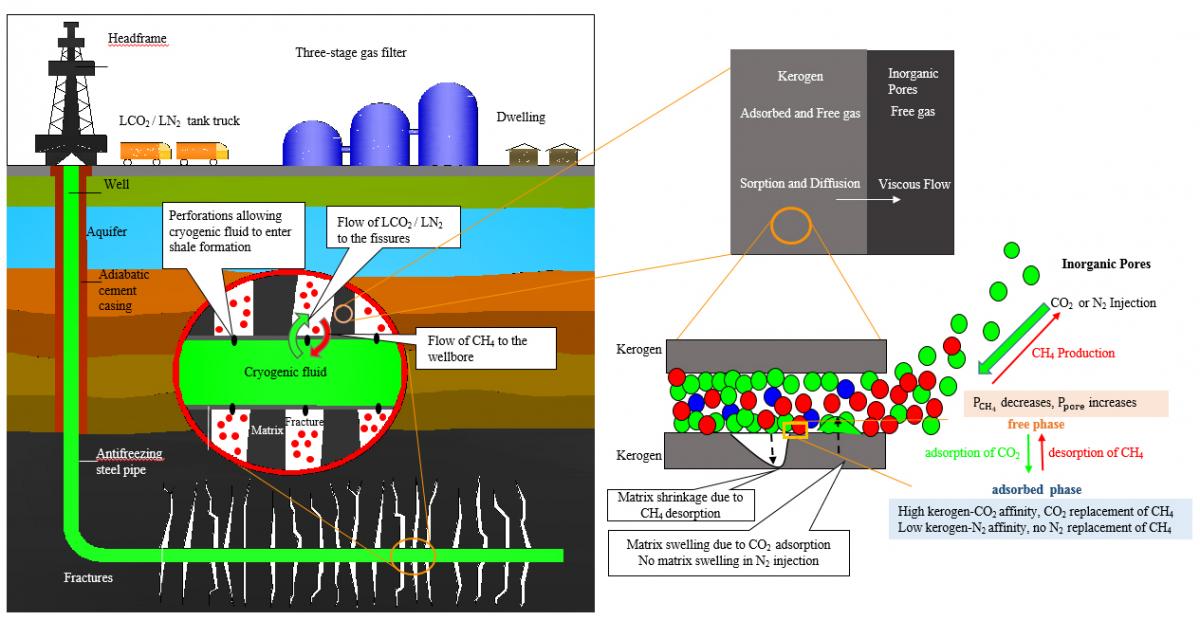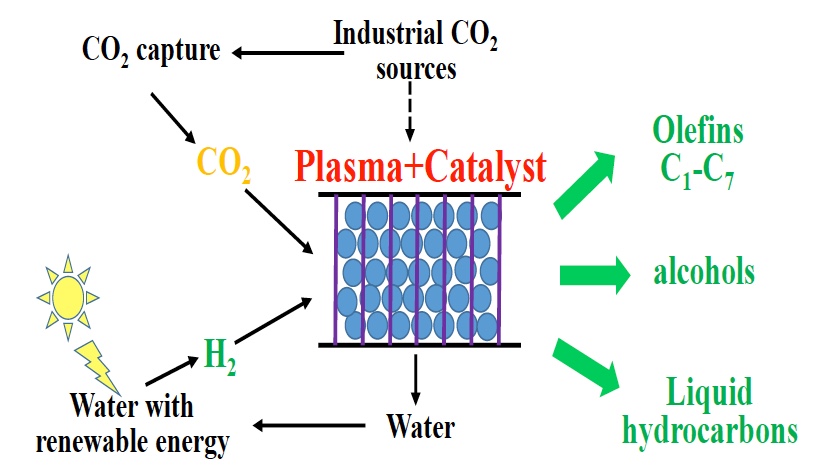In Spring 2019, the EMS Energy Institute announced a new call for seed grant proposals to encourage exploratory and collaborative research with new ideas that will likely advance energy science and technology significantly and potentially lead to new externally funded research projects. The following three areas were considered:
- Energy production and upstream research, including conventional and unconventional resources, and enhanced recovery of conventional and unconventional resources
- Energy utilization and downstream research, including conversion and upgrading of energy involving new concepts and novel processes, renewable energy utilization, and carbon dioxide management, including carbon capture, utilization, and storage.
- Energy systems, materials, and energy techno-economics
Nine proposals were submitted and were evaluated by a panel of senior faculty members according to the following criteria: concept and rationale; objectives, approach, and expected results; and team qualifications and collaboration. The EMS Energy Institute selected the following four proposals for seed grants in May 2019.
 Energy production and upstream research
Energy production and upstream research
Title: Mapping Reservoir Rock Composition of Conventional and Unconventional Deposits with Intelligent Imaging
PI and Co-PI: Zuleima Karpyn (College of Earth and Mineral Sciences and the EMS Energy Institute) and Sharon Huang (College of Information Sciences and Technology, and Huck Institutes of the Life Sciences)
Overview: The proposed project aims to advance hydrocarbon production from conventional and unconventional reservoirs by developing novel machine learning and image analysis tools to enable automated, three-dimensional mapping of mineral constituents in reservoir rocks using high-fidelity X-ray microtomography imaging. Results from this work will support improved representation and modeling of rock-fluid interactions affecting the mobility and trapping of oil, brine, and gas in complex geologic systems. This proposal is also intended to stimulate new synergies between research groups in the College of Earth and Mineral Sciences and the College of Information Sciences and Technology and build research capacity at Penn State in the area of image data science, which can be transferrable to many fields interested in constructing material compositional maps.
Title: Exploring Nonaqueous Cryogenic Stimulation and Its Application in Gas Shale Reservoir to Maximize Gas Production and Minimize the Environmental Footprint
PI and Co-PI: Shimin Liu (College of Earth and Mineral Sciences and the EMS Energy Institute) and Ming Xiao (College of Engineering)
Overview: The shale gas revolution has dramatically changed the energy landscape of North America. Despite this enormous success, significant technological challenges remain. To improve the gas production from underperforming wells, the researchers will explore, investigate, and test an innovative cryogenic stimulation technology on shale and quantify its effectiveness on gas production enhancement. The fluid dynamics behaviors of gas within shale is the key for success of this early and exploratory technology. The proposed study presents an atomic-to-pore scale fluid dynamic study of shale gas reservoirs under nonaqueous cryogenic liquid nitrogen and liquid carbon dioxide treatments through a combination of experimental and numerical simulation approach. With a multiscale approach, combining experimental and numerical strategies, the fundamental mechanism of multiscale fluid-shale interactions under cryogenic treatment will be uncovered and its impact on the long-term shale gas production will be quantified.
 Energy utilization and downstream research
Energy utilization and downstream research
Title: Low-Temperature Plasma-Assisted Catalytic Conversion of Carbon Dioxide to Value-added Chemicals and Fuels
PI and Co-PI: Xiaoxing Wang (EMS Energy Institute) and Sean D. Knecht (College of Engineering)
Overview: To mitigate climate change, the reduction of anthropogenic carbon dioxide (CO2) emissions is of paramount importance. Catalytic conversion of CO2 to value-added chemicals and fuels is potentially an attractive and sustainable solution for mitigating CO2 emissions. The researchers seek to develop a new and more efficient process for catalytic CO2 conversion with hydrogen to chemicals and fuels with the assistance of low-temperature plasma. Through the proposed research, the team expects to gain a deep insight on the physical and chemical aspects of CO2 and hydrogen dissociation/reactions in a dielectric barrier discharge plasma reactor; study and identify the key parameters for plasma-assisted CO2 hydrogenation to improve the knowledge base in the plasma-catalysis scientific community; identify and clarify the synergistic effects of coupling non-thermal plasma with catalysis; and develop a catalyst working effectively for the plasma- assisted CO2 conversion process. The proposed work will facilitate the development of new technology for catalytic CO2 conversion in a more energy-efficient manner.
1a) Lattice fringes and raw HRTEM micrographs of anthracites with carbon content (wt.%, daf) and mean maximum reflectance (Rmax). b) False colored HRTEM fringes (colored by fringe length) showing the mean fringe orientation (the diameter angle in the circle), Lattice fringes and raw HRTEM micrographs are reprinted with permission of copyright holder. IMAGE: Yuzhen Han
Energy Systems and Materials
Title: Graphene Production from Attrition Milling of Anthracite Coal at the Bench Scale
PI and Co-PI: Jonathan P. Mathews (College of Earth and Mineral Sciences and the EMS Energy Institute) and James H. Adair (College of Earth and Mineral Sciences and the EMS Energy Institute)
Overview: Anthracite micronization followed by a controlled hydrometallurgical processing (acid treatment and controlled attrition milling approach) is proposed to generate graphene at the bench scale using a scalable approach. Through careful selection of the anthracite and by controlling the milling process, it is expected that the graphene oxide produced can be engineered to meet graphene size needs. The abundant graphene components in anthracite also make this an inexpensive graphene source that has the potential to overcome the high cost that limits current use.
Each of the four proposals selected received $15,000 from the EMS Energy Institute.


